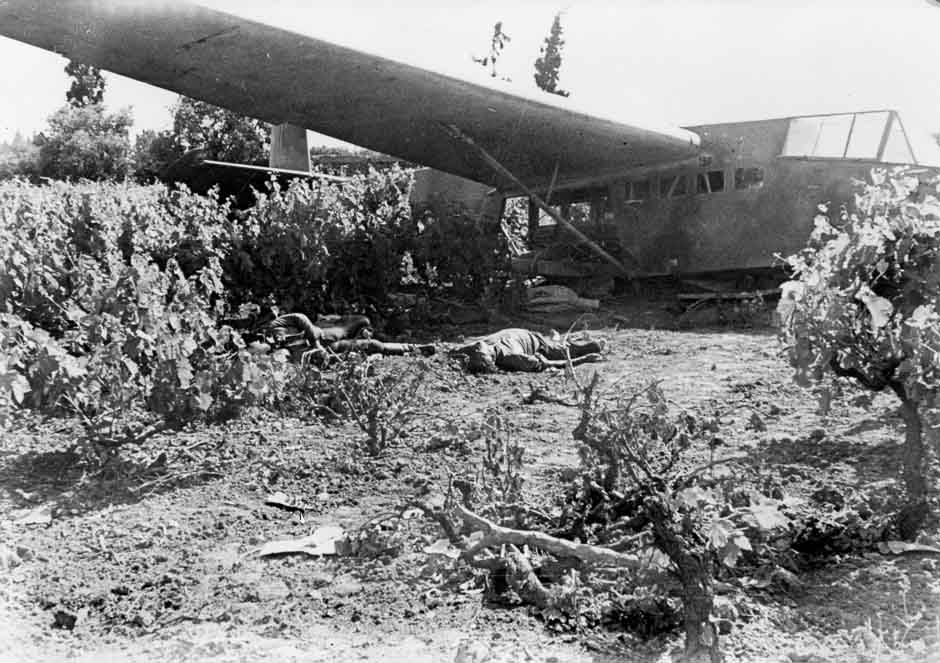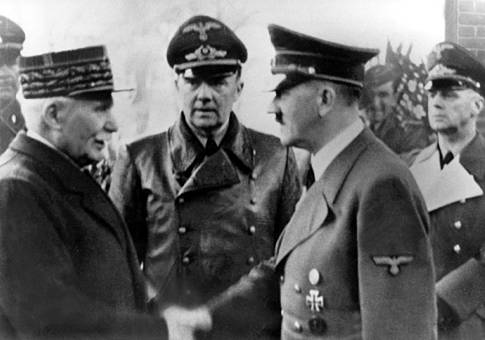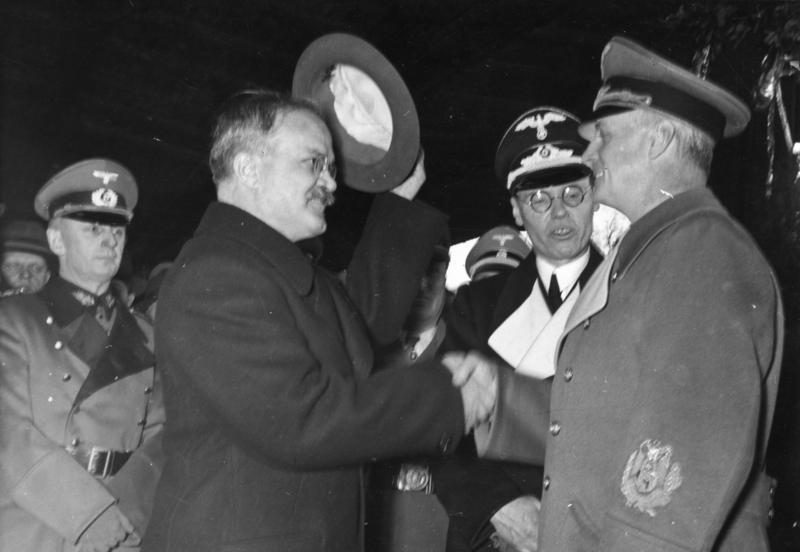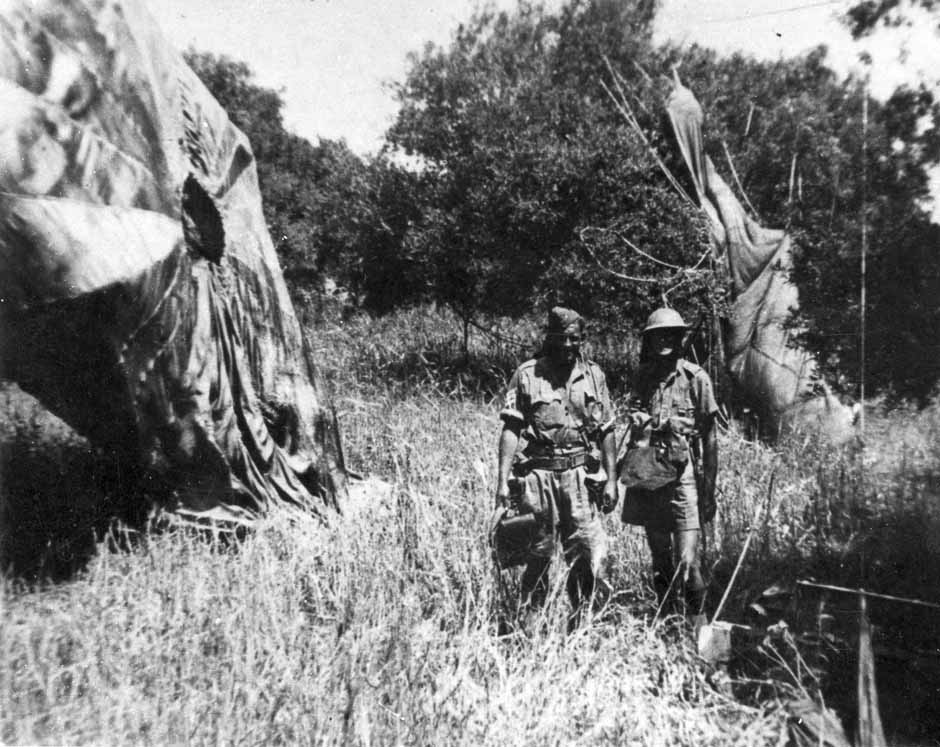"Before Crete we had never won a battle. After Crete we never lost one"
Winston Churchill
"The German invasion of Crete in May 1941 stands as the greatest disaster in the history of airborne warfare. Up until that point, airborne operations had been used mainly in a tactical and operational context to seize key objectives in advance of the ground forces, such as the seizure during the Balkan campaign of the bridge over the Corinth Canal on the 26 April 1941, and the seizure of the Belgium fortress of Eban Emael on the 11 May 1940. The German invasion of Crete (codenamed Operation Merkur, or Mercury, after the Roman God of communication, travel and thievery – the counterpart of Hermes, the messenger of the Gods in Greek mythology) has been the only strategic airborne operation aimed at attacking and occupying such an important target and what followed after the first transports approached Cretian airspace we know why. The operation was the brainchild of Generalmajor Kurt Student, the commander, and fanatical proponent of the airborne arm who believed that the paratroopers could operate in their own right and not merely be used to support the Wehrmacht. His faith in them was the main reason he took such a fatal gamble"
From "Blood, Sweat and Tears: An objectionist view of the Second World War" by Len Deighton

The island of Crete is just over 160 miles long and varies from seven to thirty-six miles in width. There are four mountain ranges (that almost seem to form a continuous spine along the island) that all come together in the central mass of Mount Ida. To the southwest is the Sphakia (White) mountain range, which literally falls into the sea at certain points and make access to the area very difficult. Rain falling on this range irrigates the northern strip of coastal land around Suda Bay and supports the town of Canea. Moving eastwards there is a depression, the Mount Ida range, another depression and then another coastal strip of land with Heraklion, the principle town, after which the mountains rise again to the summit of Mount Dikhti. The relatively poor harbours have meant that Crete has remained isolated and even by 1941, was behind in facilities and communications infrastructure compared to the rest of the Mediterranean.
The Germans were right to believe that it was important to take the island. After all, Crete has always been considered a strategic point in the Mediterranean that had greatly been enhanced by the appearance of aircraft in warfare. A British airfield on Crete could be used to raid deep into the Balkans Rumanian oil fields) or be used against North Africa. Suda Bay was also a harbour with great potential as a naval base and so whoever controlled Crete had a major advantage in the Eastern Mediterranean. The potential benefits for the Germans were obvious, it was however, a difficult place to attack, especially from the air.
The immediate background to Operation Mercury lies in the events of 1940 and 1941. With the postponement of Operation Seelöwe , Hitler decided to opt for a peripheral strategy, as recommended by others in the Nazi hierarchy such as Reichsmarshall Hermann Göring and Grand Admiral Erich Raeder, to try and bring Britain to the negotiating table before American assistance could prove effective or the Soviet Union decided to enter the war on the Allied side. Even the Army considered a Mediterranean strategy with the Chief of Staff, General Franz Halder discussing with General Walter von Brauchitsch options in case Sealion proved impossible and concluded that “we could deliver the British a decisive blow in the Mediterranean, shoulder them away from Asia, help the Italians in building their Mediterranean empire and, with the aid of Russia, consolidate the Reich which we have created in western and north-western Europe.” In October 1940, Hitler attempted to cement a Mediterranean coalition by travelling on his personal train to visit General Franco at Hendaye and Marshal Pétain – the only time Hitler left his headquarters for anybody other than El Duce, a sign that he attached a great deal of importance to the plan. Neither meeting was entirely successful – Hitler’s meeting with Franco drawing a comment from Hitler that “rather than go through that again I would prefer to have three or four teeth taken out” as both leaders were wary of loosing colonial territory so as to persuade the other to join the Axis cause. These diplomatic efforts were conducted so that the Wehrmacht could conduct an assault on Gibraltar and then deploy reinforcements to the Italian forces in Libya and then drive for the Suez Canal.

Hitler meets with Petain during his historic train journey
Hitler had in fact vetoed earlier Italian designs on Yugoslavia as it was tied economically to the Reich and he wanted to keep the Balkans relatively stable. He had intervened in a dispute between Hungary and Rumania over the region of Transylvania, as Germany depended upon Rumanian oil exports and while he had allowed the transfer of some territory to Hungary, had guaranteed the remainder of Rumania and sent a large military ‘training mission’ to the country. This upset the Soviets who had seen that part of the Balkans as traditionally being part of their sphere of influence and despite German diplomatic assurances, accused the Germans of breaching Article III of the Non-Aggression Pact that called for joint consultation.
Having established some form of stability in the Balkans, the Fuhrer strongly recommended to the Italians that the status quo be kept there for the time being as Hitler was anxious that a war with the Soviet Union be started when and where he wished it to start it, not as a result of some crisis in the Balkans. This immensely annoyed Mussolini who was afraid that the war might end before the Italian Armed Forces could show their prowess in battle to the world. Greece seemed to be the exception to the Balkan rule, as it was really part of the Mediterranean theatre and could serve as a strategic outpost to support the Italian drive against Egypt and the Suez Canal and Hitler had tried to interest Mussolini in both Greece and Crete as early as July 1940. Both OKH (the Army High Command) and OKW (the High Command of the Armed Forces) had considered plans to implement the joint Italian-German offensive in the Mediterranean and concluded that an attack on Greece would be an essential part of any campaign. Such an attack would take place after the Italian capture of Mersa Matruh that would provide the Axis with airfields in North Africa from which to give air support to the drive towards Suez and an airborne invasion of Crete. Although led by General Metaxas and maintaining a neutral position, Greece was bound strategically and economically to Britain and the Greek Royal Family had strong British connections. Occupying mainland Greece and Crete would pre-empt a British move into Greece that would directly threaten Italy, provide an additional base for operations against the Italian advance in North Africa and threaten the Rumanian oil fields. Therefore an Italian attack on Greece suited Hitler’s overall plans and he may even have given Mussolini a green light when the two met at the Brenner Pass on 4 October...
---------------------------------------
All comments and criticsms are welcome
Winston Churchill
"The German invasion of Crete in May 1941 stands as the greatest disaster in the history of airborne warfare. Up until that point, airborne operations had been used mainly in a tactical and operational context to seize key objectives in advance of the ground forces, such as the seizure during the Balkan campaign of the bridge over the Corinth Canal on the 26 April 1941, and the seizure of the Belgium fortress of Eban Emael on the 11 May 1940. The German invasion of Crete (codenamed Operation Merkur, or Mercury, after the Roman God of communication, travel and thievery – the counterpart of Hermes, the messenger of the Gods in Greek mythology) has been the only strategic airborne operation aimed at attacking and occupying such an important target and what followed after the first transports approached Cretian airspace we know why. The operation was the brainchild of Generalmajor Kurt Student, the commander, and fanatical proponent of the airborne arm who believed that the paratroopers could operate in their own right and not merely be used to support the Wehrmacht. His faith in them was the main reason he took such a fatal gamble"
From "Blood, Sweat and Tears: An objectionist view of the Second World War" by Len Deighton

The island of Crete is just over 160 miles long and varies from seven to thirty-six miles in width. There are four mountain ranges (that almost seem to form a continuous spine along the island) that all come together in the central mass of Mount Ida. To the southwest is the Sphakia (White) mountain range, which literally falls into the sea at certain points and make access to the area very difficult. Rain falling on this range irrigates the northern strip of coastal land around Suda Bay and supports the town of Canea. Moving eastwards there is a depression, the Mount Ida range, another depression and then another coastal strip of land with Heraklion, the principle town, after which the mountains rise again to the summit of Mount Dikhti. The relatively poor harbours have meant that Crete has remained isolated and even by 1941, was behind in facilities and communications infrastructure compared to the rest of the Mediterranean.
The Germans were right to believe that it was important to take the island. After all, Crete has always been considered a strategic point in the Mediterranean that had greatly been enhanced by the appearance of aircraft in warfare. A British airfield on Crete could be used to raid deep into the Balkans Rumanian oil fields) or be used against North Africa. Suda Bay was also a harbour with great potential as a naval base and so whoever controlled Crete had a major advantage in the Eastern Mediterranean. The potential benefits for the Germans were obvious, it was however, a difficult place to attack, especially from the air.
The immediate background to Operation Mercury lies in the events of 1940 and 1941. With the postponement of Operation Seelöwe , Hitler decided to opt for a peripheral strategy, as recommended by others in the Nazi hierarchy such as Reichsmarshall Hermann Göring and Grand Admiral Erich Raeder, to try and bring Britain to the negotiating table before American assistance could prove effective or the Soviet Union decided to enter the war on the Allied side. Even the Army considered a Mediterranean strategy with the Chief of Staff, General Franz Halder discussing with General Walter von Brauchitsch options in case Sealion proved impossible and concluded that “we could deliver the British a decisive blow in the Mediterranean, shoulder them away from Asia, help the Italians in building their Mediterranean empire and, with the aid of Russia, consolidate the Reich which we have created in western and north-western Europe.” In October 1940, Hitler attempted to cement a Mediterranean coalition by travelling on his personal train to visit General Franco at Hendaye and Marshal Pétain – the only time Hitler left his headquarters for anybody other than El Duce, a sign that he attached a great deal of importance to the plan. Neither meeting was entirely successful – Hitler’s meeting with Franco drawing a comment from Hitler that “rather than go through that again I would prefer to have three or four teeth taken out” as both leaders were wary of loosing colonial territory so as to persuade the other to join the Axis cause. These diplomatic efforts were conducted so that the Wehrmacht could conduct an assault on Gibraltar and then deploy reinforcements to the Italian forces in Libya and then drive for the Suez Canal.
Hitler meets with Petain during his historic train journey
Hitler had in fact vetoed earlier Italian designs on Yugoslavia as it was tied economically to the Reich and he wanted to keep the Balkans relatively stable. He had intervened in a dispute between Hungary and Rumania over the region of Transylvania, as Germany depended upon Rumanian oil exports and while he had allowed the transfer of some territory to Hungary, had guaranteed the remainder of Rumania and sent a large military ‘training mission’ to the country. This upset the Soviets who had seen that part of the Balkans as traditionally being part of their sphere of influence and despite German diplomatic assurances, accused the Germans of breaching Article III of the Non-Aggression Pact that called for joint consultation.
Having established some form of stability in the Balkans, the Fuhrer strongly recommended to the Italians that the status quo be kept there for the time being as Hitler was anxious that a war with the Soviet Union be started when and where he wished it to start it, not as a result of some crisis in the Balkans. This immensely annoyed Mussolini who was afraid that the war might end before the Italian Armed Forces could show their prowess in battle to the world. Greece seemed to be the exception to the Balkan rule, as it was really part of the Mediterranean theatre and could serve as a strategic outpost to support the Italian drive against Egypt and the Suez Canal and Hitler had tried to interest Mussolini in both Greece and Crete as early as July 1940. Both OKH (the Army High Command) and OKW (the High Command of the Armed Forces) had considered plans to implement the joint Italian-German offensive in the Mediterranean and concluded that an attack on Greece would be an essential part of any campaign. Such an attack would take place after the Italian capture of Mersa Matruh that would provide the Axis with airfields in North Africa from which to give air support to the drive towards Suez and an airborne invasion of Crete. Although led by General Metaxas and maintaining a neutral position, Greece was bound strategically and economically to Britain and the Greek Royal Family had strong British connections. Occupying mainland Greece and Crete would pre-empt a British move into Greece that would directly threaten Italy, provide an additional base for operations against the Italian advance in North Africa and threaten the Rumanian oil fields. Therefore an Italian attack on Greece suited Hitler’s overall plans and he may even have given Mussolini a green light when the two met at the Brenner Pass on 4 October...
---------------------------------------
All comments and criticsms are welcome



